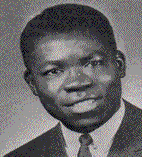The Integration of Mercer University
In 1954 the Supreme Court ruled that educational facilities in the United States should be integrated with all deliberate speed. Many universities resisted integration, and images of violence dominate the cultural memory of integration: riots in Mississippi, soldiers escorting little girls in Arkansas, and the Governor blocking the schoolhouse door in Alabama.
Mercer went against the trend. In 1963 Mercer University became the first previously all white institution in Georgia to voluntarily integrate. The move was controversial at the time, yet the story of Mercer's integration has become a crucial component of the institution's memory.
This exhibit examines Mercer's integration from four distinct perspectives.
 |
The Administration: Although many Mercer students and faculty supported integration, President Rufus Harris made the decision and defended it from numerous attacks. A small group of administrators, especially Joe Hendricks, implemented the decision. |
 |
Sam Oni: A Baptist missionary convert from Ghana, Sam Oni was the first black student to attend Mercer. His story of determination, disillusionment, and redemption is the centerpiece of the University's integration memory. |
 |
Black students: The first classes of black students to attend Mercer faced intolerance, which they challenged to remake the culture of the University. |
 |
White students: For most Mercer students during the Civil Rights Movement, integration was an ethical issue, not a personal issue. No violent conflicts took place, but Mercer's students were forced to wrestle with racism. |